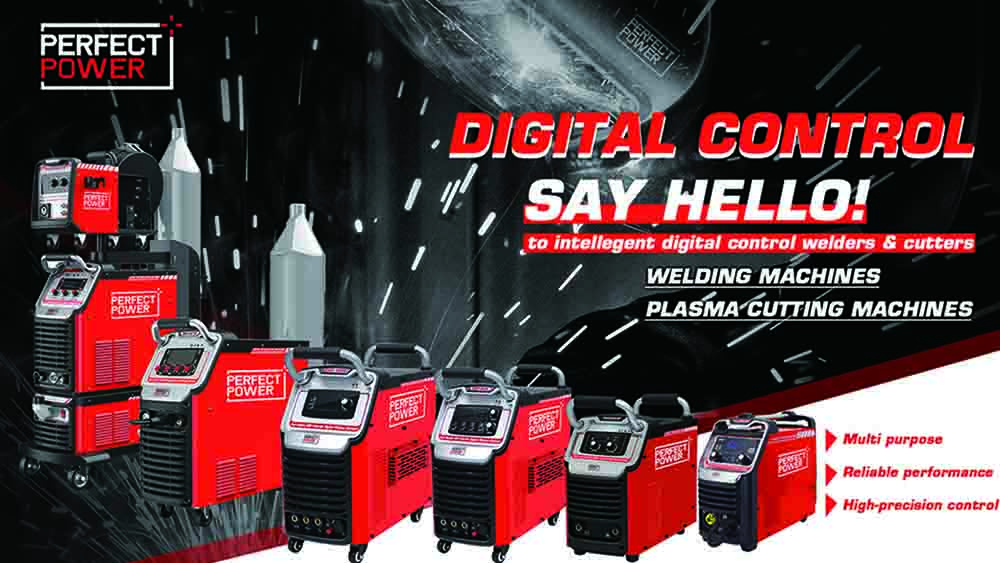
Getting started with TIG welding may appear overwhelming, but we have simplified the process by providing you with all the information you need to select a TIG welder.
What is TIG welding?
TIG welding, also known as GTAW (Gas Tungsten Arc Welding), employs a non-consumable tungsten electrode to generate the weld and is characterized by the use of an arc. Unlike MIG welding, which uses a wire to produce the necessary spark for welding, TIG welding utilizes tungsten rods to join metals.
What works for my budget?
As with any equipment, the quality and durability of a TIG welder generally correspond to its price. However, the budget you set also depends on the level of sophistication required by the machine. A classic TIG welder like the TIG-200P AC/DC TIG welder or the TIG-200DP 200A AC/DC TIG welding machine is typically at the more affordable end of AC/DC TIG machines, whereas a multi-process machine such as the TIG-315P 200V-440V AC/DC TIG welding machine can be more costly thanks to there advanced capabilities.
What materials can be welded?
Compared to other welding methods, TIG welders offer the advantage of being able to weld a broader range of metals and alloys. This means that materials such as stainless steel, aluminum, magnesium, copper, brass, bronze, and even gold can be welded using TIG welding.
AC/DC vs DC only TIG Machines
AC/DC TIG welding machines offer more flexibility as they enable you to switch between current types depending on the metal being welded. On the other hand, DC-only machines are commonly used for welding metals such as mild steel or stainless steel. If you plan to weld aluminum, an AC/DC TIG welding machine is necessary. Additionally, it’s important to consider which type of tungsten to use based on the material being welded, with thoriated (red tungsten) recommended for mild steel and stainless steel, and zirconiated (white tungsten) for aluminum.
What benefits are there to using a higher frequency on AC tig?
By adjusting the balance control to increase electrode negative polarity, along with utilizing high AC frequency, TIG welders can achieve deeper penetration and prevent the tungsten from balling up. This results in the ability to weld tight joints with excellent penetration without the risk of excessive filler metal deposition.
Are there any benefits of 3 phase over single phase?
When comparing single-phase and three-phase power supplies, the latter is more efficient. A three-phase power supply is capable of transmitting three times the amount of power as a single-phase power supply, while only requiring one additional wire (i.e., three wires instead of two). This enables machines to operate at higher amperage levels, which facilitates the welding of thicker materials and supports longer weld times with a higher duty cycle.
What is the difference between Lift TIG and HF TIG?
There are two different methods for starting the arc in TIG welding: Lift TIG and HF (high-frequency) TIG. With Lift TIG, the tungsten electrode is touched to the metal and then lifted slightly away. This causes the current to be low, preventing the electrode and workpiece from sticking together. Only when a gap is created between the two does the machine detect the break and supply the full current to start welding properly.
On the other hand, HF TIG occurs when the welder positions the tungsten rod close to the metal and presses the torch trigger to initiate the arc and start welding. Most professional TIG machines offer the option to choose between Lift and HF to begin the welding process.
Why should I use a TIG pedal with my TIG welder?
In essence, the presence of a TIG pedal enables greater amperage control, resulting in enhanced accuracy and quality of the final weld.
Input voltage & electrical supply – What you need to know
It is crucial to determine your location’s electricity supply before commencing TIG welding since it can differ throughout the UK. Although standard UK mains outlets supply 230v, your workspace may be restricted to a lower voltage, so it’s essential to assess the amp rating to estimate the necessary power to operate the machine and guarantee sufficient power availability. The rule of 1 to 10 can be applied to determine the necessary supply, whereby 1A in the supply equates to 10A out. For example, a 240A machine would necessitate a 24A input.
IP21 Rating: IP21 vs IP21S
The Ingress Protection (IP) rating of a TIG machine specifies the degree of protection it offers against external elements such as dust or water. IP ratings range from no protection to protection from a specific distance, complete protection against strong water jets or even high pressure when immersed. The supplementary letter included in an IP21S rating denotes how the machine was tested, with “S” signifying that the machine was stationary during the water test.
Everything to know about warranty
It’s important to have proper coverage when purchasing a TIG welder to ensure protection in case of issues. A warranty can provide the necessary aftercare to resolve problems and maintain the machine’s condition. Perfect Power Welders offers a warranty that grants access to complete service and repair facilities at their branches, as well as the option for on-site visits for repairs.



